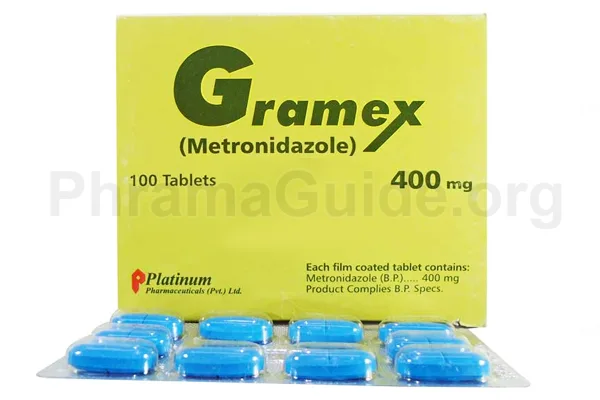Gramex is an antibiotic used to treat various bacterial and parasitic infections. Like most medications, it can cause side effects in some individuals, and the severity of side effects can vary from person to person health conditions. Here are some common and less common side effects associated with Gramex.
Common Side Effects
- Gastrointestinal Disturbances: The most frequent side effects involve the digestive system. These may include nausea, vomiting, diarrhea, and a metallic taste in the mouth.
- Abdominal Discomfort: Some people may experience abdominal cramping, pain, or discomfort while taking Gramex.
- Loss of Appetite: A decrease in appetite might occur as a side effect of this medication.
- Headache: Headaches are a relatively common side effect experienced by some individuals.
- Dizziness or Vertigo: Feeling dizzy or experiencing a spinning sensation (vertigo) can occur in some cases.
- Dry Mouth: This antibiotic might lead to a dry mouth or an unpleasant metallic taste in the mouth.
- Darkening of Urine: Gramex can cause a harmless darkening of urine, which usually resolves after discontinuation of the medication.
- Vaginal Yeast Infection: Women taking Gramex might experience vaginal yeast infections as it can disrupt the normal balance of microorganisms in the vagina.
- Joint or Muscle Pain: Some individuals might experience joint or muscle pain while taking this medication.
Less Common Side Effects
- Peripheral Neuropathy: In rare cases, Gramex has been associated with peripheral neuropathy, causing numbness, tingling, or pain in the hands or feet. This side effect is more common with prolonged use or higher doses.
- Seizures or Central Nervous System Effects: Although uncommon, Gramex might rarely cause seizures or other neurological symptoms such as confusion, hallucinations, or coordination problems.
- Blood Disorders: Rarely, Gramex can affect blood cell counts, leading to conditions like leukopenia (reduced white blood cells), thrombocytopenia (reduced platelets), or agranulocytosis (severely reduced white blood cells).
- Liver Dysfunction: Elevated liver enzymes or more severe liver problems, such as hepatitis or jaundice, are rare but possible side effects.
- Allergic Reactions: Severe allergic reactions to Gramex are uncommon but can include symptoms such as rash, hives, itching, swelling of the face or throat, and difficulty breathing.
- Disulfiram-like Reaction: In some cases, consuming alcohol while taking Gramex may result in a disulfiram-like reaction, causing symptoms like flushing, nausea, vomiting, headache, and rapid heart rate.
- Darkening of Skin or Urine: Although more commonly listed as a common side effect, in some individuals, the skin or urine might darken due to Gramex use.
- Visual Changes: Visual disturbances, including blurred vision or difficulty focusing, might occur in rare cases.
- Pancreatitis: There have been rare reports of Gramex causing inflammation of the pancreas, leading to symptoms such as severe abdominal pain.

What is Gramex?
Gramex is one of the leading brands of Metronidazole, manufactured and marketed by Platinum Pharmaceuticals (Pvt) Ltd, Pakistan.
Gramex : Available Formulations and Strengths
Presently, Gramex is available in Tablet and Gel Forms with the following strengths.
Gramex Tablet : Metronidazole 400mg strengths
Gramex Gel : Metronidazole 1% w/w + Chlorhexidine 0.25% w/w strengths.
What Are The Possible Drug Interactions of Gramex?
- Alcohol: It’s crucial to avoid consuming alcohol while taking Gramex. Combining alcohol with this antibiotic can cause a disulfiram-like reaction, leading to symptoms such as severe nausea, vomiting, flushing, rapid heart rate, and headache.
- Warfarin and Other Blood Thinners: Gramex may increase the effects of blood thinners such as warfarin, leading to an increased risk of bleeding. Close monitoring of blood clotting parameters is necessary when these medications are used together.
- Lithium: Gramex can increase the levels of lithium in the body, potentially leading to lithium toxicity. Monitoring of lithium levels and adjustment of dosage may be necessary if used concurrently.
- Cimetidine and Some Antacids: Medications like cimetidine (used for stomach ulcers and acid reflux) and certain antacids might increase the levels of Gramex in the blood, potentially leading to an increased risk of side effects.
- Phenytoin and Other Anticonvulsants: Gramex can increase the levels of medications like phenytoin (used to control seizures). Monitoring of drug levels and potential dosage adjustments may be needed.
- Busulfan: Concurrent use of Gramex and busulfan (used in chemotherapy) can increase the risk of busulfan toxicity.
- Certain HIV Medications: Some HIV medications, such as ritonavir and efavirenz, may interact with Gramex, altering their effectiveness or increasing the risk of side effects. Dose adjustments or alternative medications may be required in such cases.
- Disulfiram: As Gramex can cause a disulfiram-like reaction with alcohol, combining it with disulfiram (used to treat alcohol dependence) might intensify this reaction.

Leave A Comment